Your Guide to Global Health – 11 Organizations to Elevate Your Distribution Business

Contents Overview
Statistics show that almost the entire cost of healthcare in the developing world is covered by the local government themselves. However, even if the average aid from international health organizations is estimated at around 5% or less of the total country’s costs, the importance of those organizations should not be diminished. Why? Organizations like the WHO, UNICEF, UNAIDS and the alike, are immensely important because of their openly published data and reports. Health workers, researchers, doctors, or in this case pharma distributors, can get firsthand information on rapidly emerging diseases or medicine shortages in the market at any given time.
This is particularly advantageous to local distributors in developing regions as they can use the given information, knowledge of the local area and their personal network, to stay ahead of big pharma and the competition. Manuals for health care workers, papers on the development of health care systems, as well as campaigns against tropical diseases, all published by different international organizations give insights to trends in medicine demand that may follow. In addition, international health organizations are a major source of current news on outbreaks, statistics about recent increases of non-communicable diseases, updates about the newest local healthcare initiatives, technical advice, and training for local health professionals, and some even produce major publications about healthcare in general.
Manuals for health care workers, papers on development of health care systems as well as campaigns against tropical diseases, all published by different international organizations, give insights to trends in medicine demand that may follow
Today, there are multiple international agencies and institutions that guide global health efforts. They can be generally divided into three categories:
- Multilateral Organizations, are funded from multiple governments and other sources and are splitting their efforts among many different countries and/or regions, not necessarily only developing ones.
- Bilateral Organizations, are government agencies or nonprofit organizations, based in a single country, however, still providing funding and effort to multiple countries, but those in the developing stage.
- Non-Governmental Organizations (NGOs), are nonprofit groups, usually lead mainly by volunteers. They can be local, national or international and are focus and task-oriented, meaning they are usually devoted to a particular health issue or disease. On the opposite, first two types are involved in many initiatives and projects, related to health in general and many types of diseases and illnesses.
Most of the prominent ones (multilateral and bilateral) are under the jurisdiction of the United Nations, but smaller, usually being the NGOs, are larger in numbers. It is estimated that there are around 1,500 non-governmental organizations that are fighting for better worldwide health, thus they are playing an integral part at the forefront of solving global health challenges.
Global Health Calls for a Unified Effort
Why is following health news important?
You should never underestimate the fact that knowledge is power. As human beings, we have restricted capability to steer our own health. A healthy diet and exercise can only take us so far since so many factors influencing health and well-being lie outside the sphere of personal control of an individual. Here lies the opportunity for a medical distributor to grow its reputation among the community and local health professionals.
It is well known that global health efforts and progressing health and healthcare fairness for the world populace, as well as managing repercussions of the sheer number and intensity of the threats to global health, are a task no sole country or agency can work in solitary to undertake. This circumstance further encompasses the idea of the need for a greater understanding of health and wellness. Finding a solution requires a unified effort from people in a variety of disciplines.
Finding a solution requires a unified effort from people in a variety of disciplines
For any business, this should be taken as an opportunity to leave your professional mark by involving yourself in those efforts. However, helping to take on challenges of your local, regional or even international organizations, will for sure start by following their updates and networking with their personnel. After, you should involve yourself in some of their initiatives. This will, on one hand, raise your reputation among the most important stakeholders of your business, and on another allow you to identify new opportunities on which you can capitalize through cross- and upselling or even acquire new customers.
For example, you might realize that a local NGO for a safe and healthy pregnancy and delivery is supporting poor young mothers, who are also in distress of taking care of their elderly parents. In this case, you could suggest to the leaders of the said initiative to expand their range from supporting them only with baby diapers to also support them with free adult diapers. On another hand, you might learn that a new vaccination action plan is being prepared for malaria from the local bilateral agency. In this case, you could offer the organizers a supply of AdvaCare’s affordable malaria test kits or medicines.
In order for you to be equipped with the tools to pinpoint these business opportunities, here are four steps you could follow:
- Identify the resources available to you, whether it be openly published government data or personal relationships and networking, for the most imminent and first-hand information on the specific diseases, medicines that are in increasing demand, upcoming regulatory changes or industry inside-information.
- Make a plan for how to attain and record the information collected from every identified resource. Organized data collection is absolutely vital to the next steps, which include properly assessing all data so not to rely on a risky “gut decision”.
- According to a set timetable with a predetermined deadline, assess all collected data to form a structured plan that includes steps that will take you from information gathering to actions. Those can include but are not limited to modifications of the existing business model, new distribution strategy, new marketing plan, or any new plans focused on structured growth and expansion.
- Only after the plans are clearly documented and a meeting is held with relevant personnel to explain and officially launch the new project, implementation, such as placing orders with AdvaCare, can begin. But always remember to set a timetable for every stage of the project, deadlines must be met or kept as close to schedule as possible.
However, getting the information only from the list of international institutions that will follow below, is only one piece of the puzzle that can help you take those steps and reshape your business strategy. Following local media to learn about policy changes or even business information should be a no brainer. There you can, for example, learn about new health infrastructure development, which could also be beneficial for your business development. In addition, there are six other approaches you could learn about in order for your pharmaceutical distribution company to thrive. Get more details in our previously published article.
The List of Organizations to Get You Started

Are you capitalizing enough on information?
What follows is a list of some of the largest, not necessarily most known, international health organizations you should follow to help you expand your professional horizons and consequently extend your business to new heights. Be advised that the list minimizes the complexity of the structure of international health organizations. Therefore, you should also consider adding some local less known NGOs from your region to get a comprehensive database of information.
1. Partners in Health
Famously coined as PIH, the organization provides healthcare in the poorest areas of developing countries. It builds hospitals and other medical facilities, hires and trains local staff, and delivers a range of healthcare. Partners In Health also works closely with local government officials and the world's leading medical and academic institutions, in order to build capacity and strengthen health systems. In short, Partners In Health strives to achieve two overarching goals: to bring the benefits of modern medical science to those most in need of them and to serve as an antidote to despair.
| ORGANIZATION TYPE | LOCATION TARGET | DISEASE FOCUS | SOCIAL MEDIA | INFORMATION SOURCES |
|---|---|---|---|---|
| NGO | worldwide | cancer | Webpage News | |
| Ebola virus | Knowledge Center | |||
| HIV/AIDS | ||||
| tuberculosis |
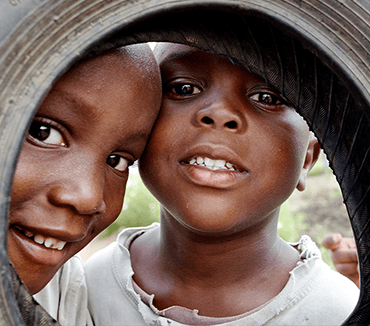
2. African Medical and Research Foundation
Commonly known as AMREF, the organization was established in 1957 with the sole purpose of training local healthcare providers. Today, being an independent, non-profit, non-governmental organization, AMREF strives to improve the health of disadvantaged people in Africa as a channel for them to liberate themselves from poverty and improve their quality of life. The organization aims to increase sustainable health access to communities in Africa through solutions in human resources for health, health services delivery and investments in health.
| ORGANIZATION TYPE | LOCATION TARGET | DISEASE FOCUS | SOCIAL MEDIA | INFORMATION SOURCES |
|---|---|---|---|---|
| NGO | Africa | tuberculosis | Webpage News | |
| HIV/AIDS | E-newsletter | |||
| malaria | Research Center |
3. The Stephen Lewis Foundation
The Stephen Lewis Foundation is a non-governmental organization that facilitates mostly AIDS – and HIV related grassroots projects in Africa. Since it’s conception in 2003, the organization has been earnestly collaborating with community-level organizations which are shifting the tide of HIV/AIDS in Africa through granting care and support to women, orphaned children, grandmothers and people living with HIV/AIDS. Through the organization’s partnerships with more than 325 community-based institutions, the foundation has amassed a wealth of information about what has really been working to push back the ravages of AIDS, and re-open the possibility of decent futures for so many people afflicted by the disease in Sub-Saharan Africa.
| ORGANIZATION TYPE | LOCATION TARGET | DISEASE FOCUS | SOCIAL MEDIA | INFORMATION SOURCES |
|---|---|---|---|---|
| NGO | Africa | HIV/AIDS | Online Newsletter | |
| News & Resources | ||||
| ORGANIZATION TYPE | LOCATION TARGET | DISEASE FOCUS | SOCIAL MEDIA | INFORMATION SOURCES |
|---|---|---|---|---|
| multilateral | worldwide | tuberculosis | News Page | |
| organization | HIV/AIDS | E-newsletter | ||
| malaria | Publications | |||
| Documents | ||||
| iLearn Tool |
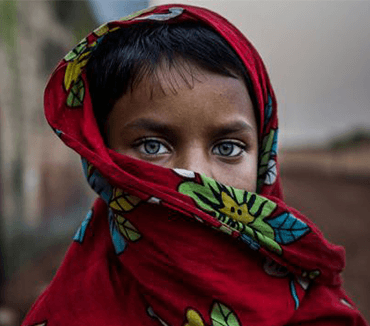
5. Joint United Nations Program on HIV/AIDS Famously known as UNAIDS, the organization strongly advocates for an expedited, far-reaching and coordinated global response on the HIV/AIDS pandemic. It is UNAIDS ambition to help escalate and support an expanded response against the lethal HIV/AIDS by working in close conjunction with partners from world governments and civil society. The organization places people affected by the HIV virus at the center of the AIDS response efforts through devising pathways for countries and local communities to get on the fast-track to ending the AIDS pandemic.
| ORGANIZATION TYPE | LOCATION TARGET | DISEASE FOCUS | SOCIAL MEDIA | INFORMATION SOURCES |
|---|---|---|---|---|
| multilateral | worldwide | HIV/AIDS | Newsletters | |
| organization | Stories & Updates | |||
| Publications | ||||
| Infographics | ||||
| Data Resources | ||||
| Fact Sheets | ||||
| Campaigns |
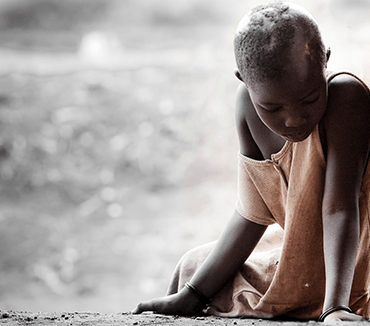
6. United Nations Children Fund Customarily referred to as UNICEF, is a specialized agency of the United Nations and a critical player in child health initiatives. The organization was conceived in December 1946 with the sole purpose of providing emergency food and healthcare to children and mothers in war-torn countries. Today the organization strives to address major health issues such as HIV/AIDS, maternal and child nutrition, maternal mortality rates, vaccination rates as well as child survival and development. UNICEF has concentrated much of its effort in areas in which relatively small expenditures can have a significant impact on the lives of the most disadvantaged children, such as the prevention and treatment of disease.
| ORGANIZATION TYPE | LOCATION TARGET | DISEASE FOCUS | SOCIAL MEDIA | INFORMATION SOURCES |
|---|---|---|---|---|
| multilateral | worldwide | pneumonia | E-Newsletters | |
| organization | diarrhea | Publications | ||
| malaria | ||||
| HIV/AIDS |
7. The World Bank
The World Bank is a vital source of financial and technical assistance to developing countries around the world. It is not a bank in the ordinary sense but a unique partnership to reduce poverty and support development.
| ORGANIZATION TYPE | LOCATION TARGET | FOCUS | SOCIAL MEDIA | INFORMATION SOURCES |
|---|---|---|---|---|
| multilateral | worldwide | universal | Health News | |
| organization | health | Research & Publications | ||
| coverage | ||||
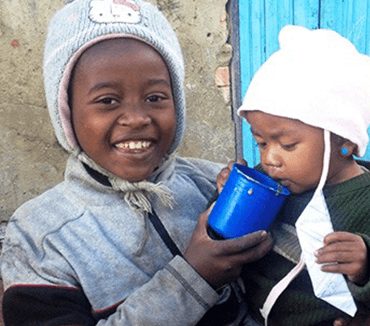
8. GAIN - Global Alliance for Improved Nutrition Every day, 815 million people are going to bed hungry, up from 777 million in 2015. One in three people lack key micronutrients, like iron and vitamin A, needed to grow properly, live active lives, and raise a healthy family. At the same time, two billion adults are overweight or obese and 41 million children are overweight. GAIN’s purpose is to improve nutrition outcomes by improving the consumption of nutritious and safe food for all people, especially the most vulnerable regions where malnutrition is not uncommon.
| ORGANIZATION TYPE | LOCATION TARGET | DISEASE FOCUS | SOCIAL MEDIA | INFORMATION SOURCES |
|---|---|---|---|---|
| multilateral | Asia | malnutrition | E-newsletter | |
| organization | Africa | Knowledge Center | ||
9. VillageReach
Globally, more than 1 billion people have little or no access to healthcare and 6.3 million children die each year primarily from preventable diseases. The great majority live in low- and middle-income countries where limited resources and infrastructure significantly impede the ability to access quality health services. VillageReach was formed in 2000 to save lives and improve health by increasing access to quality health care for those underserved communities.
| ORGANIZATION TYPE | LOCATION TARGET | FOCUS | SOCIAL MEDIA | INFORMATION SOURCES |
|---|---|---|---|---|
| NGO | Africa | remote | Blog | |
| underserved | Resources | |||
| communities |

10. Access to Medicine Foundation Access to Medicine Foundation was founded in 2003 and started with a single idea: how can we encourage the pharmaceutical industry to do more to help the world’s poorest people access the medicine they need? Today the Access to Medicine Foundation analyses how the world's largest pharmaceutical companies are addressing access to medicine. The foundation has been working to stimulate and guide the pharmaceutical industry to do more for people living in low- and middle-income countries for more than ten years.
| ORGANIZATION TYPE | LOCATION TARGET | FOCUS | SOCIAL MEDIA | INFORMATION SOURCES |
|---|---|---|---|---|
| non-profit | developing | antimicrobial | Newsroom | |
| countries | resistance | Publications | ||
| medicine accessiblity | ||||
| vaccine accessibility |
11. The World Health Organization
The World Health Organization is a multilateral health institution primed to unite nations under a unified banner of eradicating diseases and bringing about quality healthcare globally. Since its establishment in April 1948, the WHO has played a leading role in the eradication of the smallpox pandemic. Currently, the organization has its sights set on tackling communicable diseases, particularly Ebola, HIV/AIDS, and Malaria. This, coupled with the organization’s efforts in alleviating the effects of non-communicable diseases, further affirms the institution’s goal to build a better, healthier future by working hand in hand with world governments and other partners so as to ensure the highest attainable level of health for everyone.
| ORGANIZATION TYPE | LOCATION TARGET | DISEASE FOCUS | SOCIAL MEDIA | INFORMATION SOURCES |
|---|---|---|---|---|
| multilateral | worldwide | Ebola virus | Newsroom | |
| organization | HIV/AIDS | Global Newsletter | ||
| malaria | Infographics | |||
| Zika virus | Fact Sheets | |||
| Lassa fever | Emergencies Info | |||
| Crimean-Congo | Publications | |||
| Haemorrhagic fever |
Don't want to miss the next AdvaCare article?

Recommended Content
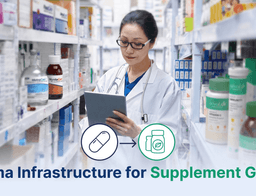
Leveraging Pharma Expertise to Thrive in Supplement Distribution

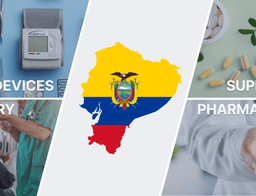
Ecuador: Importing Medicines with an International Pharmaceutical Manufacturer


How Distributors Can Win With Multi-Format Supplement Portfolios Aligned to Global Trends
